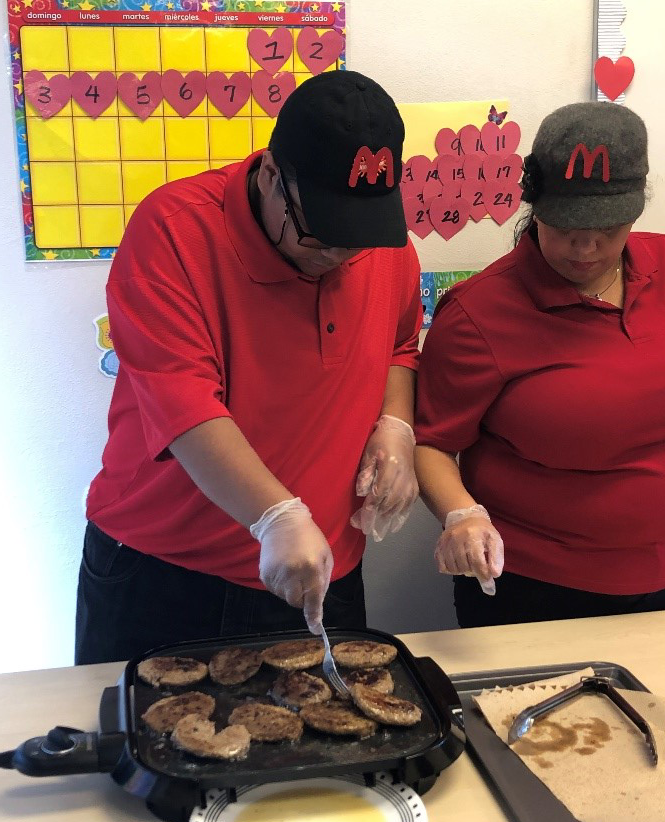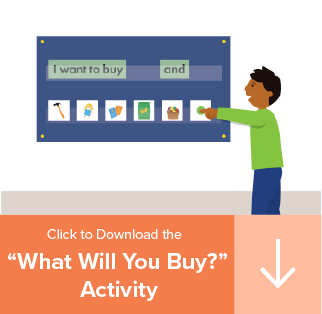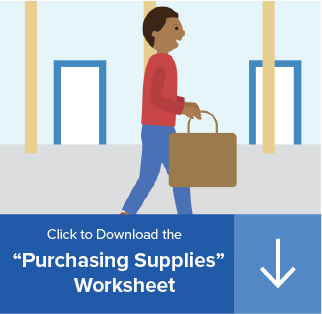December Newsletter | Building Classroom Level Outcomes
From Identifying Coins to Running a Store:
Building Classroom Level Outcomes
Individual student outcomes allow us to measure progress on IEP goals and support each student on their individual learning trajectory. Classroom level outcomes, on the other hand, provide an opportunity to consider how teaching methods support all students in certain developmental areas. The question is, how can we support individual progress by designing classroom level activities? Continue reading to learn more, and don't miss the free activities at the bottom of the page!
Transitioning from discrete tasks to classroom level outcomes
A great example of building to classroom outcomes is through the newly released Routine Teaching Unit “Withdrawing and Depositing Money from the Bank.” Individual skill attainment begins with students identifying coins and dollars in isolation as a discrete skill during small group academic activities. Once these individual outcomes are achieved, broadening activities to the classroom level allows for combined progress. Consider pairing the latest Links unit with a simulation in which students sell and purchase supplies in the classroom to encourage expressive communication between multiple students.

An elementary teacher in Utah has had great success doing just that. Through the STAR curriculum, she serves nine students between the ages of three and eleven both in inclusive and self-contained settings. Last year, she began expanding functional routine simulations to the whole classroom by creating a weekly store within her room. Students received money to spend throughout the day by completing classroom jobs and demonstrating positive behavior. They were able to build on their discrete skills identifying money to classroom level outcomes of supporting the weekly store. This year, she has extended the routine even further: every week, her students go to a store in the community to purchase items for their cooking class. In your own classroom, support the shopping functional routine during circle time with fun group activities: this STAR Themes First! “What Will You Buy?” activity reinforces pattern and symbol recognition, categorization, and decision-making skills as students complete a collaborative classification task.
Leaps and bounds in a secondary setting
 In Trujillo Alto, Puerto Rico another teacher has also expanded a routine to teach a broad set of functional skills in the classroom. The students started working with the "Filling Out a Job Application" routine individually and are now participating in classroom simulations to replicate different jobs in the community. The first one was a restaurant scenario in which the teacher transformed her classroom into a mock café.
In Trujillo Alto, Puerto Rico another teacher has also expanded a routine to teach a broad set of functional skills in the classroom. The students started working with the "Filling Out a Job Application" routine individually and are now participating in classroom simulations to replicate different jobs in the community. The first one was a restaurant scenario in which the teacher transformed her classroom into a mock café.
When the students arrived, she acted like it was their first day of work, explaining their roles as they reviewed each of the stations. All students participated by rotating through different workstations, which included: working the register, cooking food, pouring drinks, delivering food, and cleaning the restaurant. The teacher reports that her class was incredibly engaged with the activity and outwardly proud of the responsibilities they were given. She gave each student a free burger since it was their "first day" at work, which added another layer of motivation! The teacher saw progress in students’ individual attending, listening, and turn-taking skills, among others.
In this secondary classroom, the instructor expanded on routines to teach a broad set of functional skills which allowed for multiple students to be engaged and working together. These routines represent great instructional strategies that can support both group dynamics and individual student skill development. To help students build the skills they need to participate in functional routines, use activities like the “Purchasing Supplies” life skills worksheet set, and check out the Links suite of Routine Teaching Units for more classroom resources.
Take a look at your own classoom
When looking at your own classoom, or ones you have observed, think about the following questions:- What classroom-level routines have you implemented or seen implemented around your school?
- How have they allowed for opportunities to support all students in particular developmental areas?
- How has STAR or Links contributed to a successful classroom activity?
Find these and other curriculum materials | For older students, a variety of independent work tasks |
|---|



